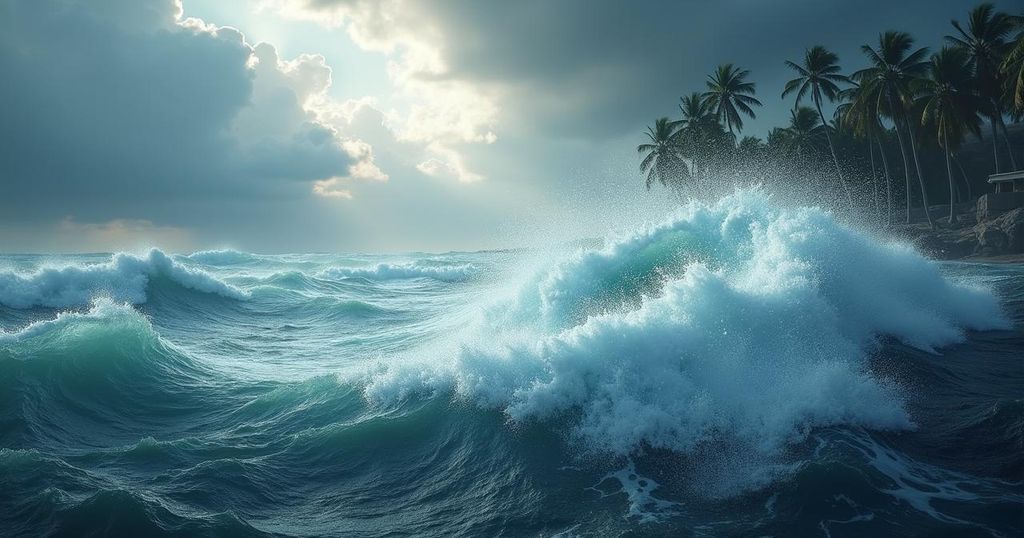Hurricanes, a natural phenomenon, are increasingly intensified by climate change, leading to more severe storms with higher rainfall and extended durations. Research connects elevated sea temperatures and atmospheric moisture to increased hurricane activity. While hurricanes have always occurred, their current intensity and destructive capabilities are exacerbated by human-induced climate change, necessitating improved preparedness and resilience measures.
Hurricanes are increasingly seen as an inevitable aspect of life within the Atlantic basin, particularly during peak hurricane season, which spans from June 1 to November 30. Recent hurricanes, such as Debby, Helene, and Milton, have raised questions regarding their severity and frequency, prompting speculation about whether climate change has intensified their impacts. In 2004, amidst the landfall of four hurricanes in Florida, I was first asked whether climate change was a contributing factor to the severity of these storms. Drawing upon my extensive experience in climate change research, I connected the dots between rising sea surface temperatures, attributed to global warming, and increased atmospheric water vapor. Given that the atmosphere can absorb approximately seven percent more water vapor per degree Celsius of warming, it stands to reason that hurricanes would harness this additional moisture, thereby intensifying their storms. Contrary to my observations, the National Oceanic and Atmospheric Administration (NOAA) at the time attributed the increased hurricane activity purely to natural variability. Subsequently, I proactively engaged with this topic at a Harvard University news conference, where I tentatively suggested that global warming was indeed influencing hurricane behavior. My assertion was met with significant backlash from meteorologists specializing in hurricane forecasting. Nevertheless, my arguments began to gain traction after the unprecedented devastation of Hurricane Katrina in 2005, followed by my contributions to articles in notable scientific journals, such as Science and Scientific American, which addressed the relationship between warmer oceans and heightened hurricane intensity. In examining recent hurricane activity, I analyzed events from 2017, notably Hurricanes Harvey, Irma, and Maria. These storms illustrated the link between oceanic heat and intense rainfall, with Harvey yielding over one meter of rain in certain areas due to the atmospheric moisture accumulated because of elevated ocean temperatures. This reinforced my ongoing assertion that anthropogenic climate change continues to elevate ocean temperatures, inherently altering hurricane dynamics. Climate change impacts hurricanes by fostering an environment characterized by warmer ocean temperatures, resulting in a trend of increasing hurricane activity. This is reflected in both the number and intensity of storms, their duration, and precipitation levels. An increase in hurricane activity indicates that future storms may manifest as larger, longer-lasting, and more intense, leading to an increased risk of destructive flooding. Hurricanes, while a natural phenomenon, are indeed being enhanced by human-induced climate change, creating a pressing need to adapt and mitigate the risks associated with these supercharged storms. Preparedness measures, such as improving building codes and flood defenses, in conjunction with strategic contingency plans for emergencies, are vital for communities most affected, including those in Texas, Florida, and Puerto Rico, as well as other regions now facing similar risks.
The discourse surrounding hurricanes and climate change is grounded in the fundamental understanding of how global warming influences ocean temperatures and atmospheric conditions. It is widely recognized that tropical cyclones, which include hurricanes, are naturally occurring weather patterns. However, human activities have exacerbated their intensity, leading to a growing body of research aimed at unraveling this complex relationship. Climate change has lead to higher sea surface temperatures, which in turn, fuels stronger storms capable of causing catastrophic damage. Scientific investigations provide insights into how warmer oceans increase the amount of heat and moisture available, thereby enhancing the potential for severe weather events and extreme rainfall associated with hurricanes.
In conclusion, hurricanes are becoming increasingly intense due to the implications of climate change, chiefly because of rising sea temperatures and elevated levels of atmospheric moisture. While the existence of hurricanes is a natural phenomenon, the current environment shaped by human-induced climate change is escalating their risks and impacts. Enhanced preparedness, infrastructure resilience, and strategic planning are essential tools to combat the challenges posed by these supercharged storms in vulnerable regions.
Original Source: newsroom.co.nz






